Spectrum Summary: General Survey of Socio-Cultural Reform Movements | History for UPSC CSE PDF Download
Socio-Cultural Reform Movements and Their Leaders
1. Raja Rammohan Roy and Brahmo Samaj

- Raja Rammohan Roy (1772-1833), often called the father of the Indian Renaissance and the maker of Modern India, wrote Gift to Monotheists (1809) and translated into Bengali the Vedas and the five Upanishads to prove his conviction that ancient Hindu texts support monotheism.
- In 1814, he set up the Atmiya Sabha (or Society of Friends) in Calcutta. He declared that Vedanta is based on reason and that, if reason demanded it, even a departure from the scriptures is justified.
- In his Precepts of Jesus (1820), he tried to separate the moral and philosophical message of the New Testament Raja Rammohan Roy founded the Brahmo Sabha in August 1828, it was later renamed Brahmo Samaj.
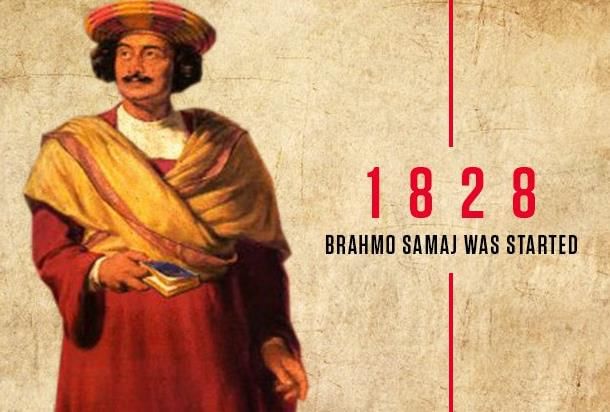
- The Samaj was committed to “the worship and adoration of the Eternal, Unsearchable, Immutable Being who is the Author and Preserver of the Universe” the Samaj s opposition to idolatry and meaningless rituals.
- The long-term agenda of the Brahmo Samaj—to purify Hinduism and to preach monotheism— was based on the twin pillars of reason and the Vedas and Upanishads.
- Roy's progressive ideas met with strong opposition from orthodox elements like Raja Radhakant Deb who organized the Dharma Sabha to counter Brahmo Samaj propaganda.
- Roy's death in 1833 was a setback for the Samaj’s mission.
The features of Brahmo Samaj may be summed thus:
(i) It denounced polytheism and idol worship.
(ii) It discarded faith in divine avatars (incarnations).
(iii) It denied that any scripture could enjoy the status of ultimate authority transcending human reason and conscience.
(iv) It took no definite stand on the doctrine of karma and transmigration of soul and left it to individual Brahmos to believe either way.
(v) It criticized the caste system.
(a) Raja Rammohan Roy’s Efforts at Social Reform
- Rammohan was a determined crusader against the inhuman practice of sati. He started his anti- sati struggle in 1818.
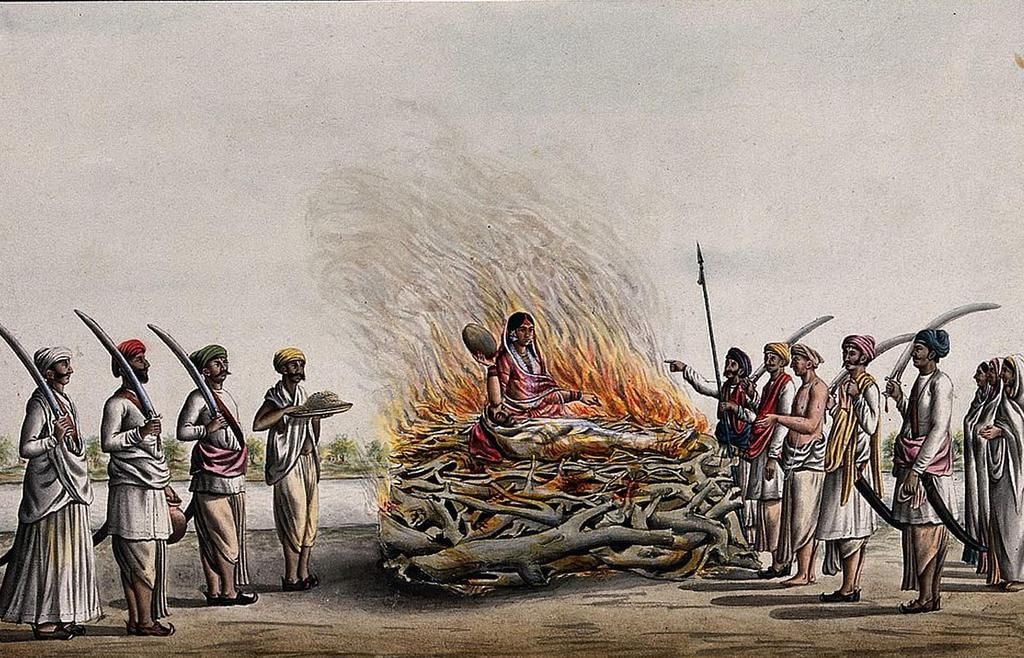 Practice of Sati
Practice of Sati - His efforts were rewarded by the Government Regulation in 1829 which declared the practice of sati a crime. Roy attacked polygamy and the degraded state of widows and demanded the right of inheritance and property for women.
- He supported David Hare's efforts to found the Hindu College in 1817, while Roy’s English school taught mechanics and Voltaire's philosophy. In 1825, he established a Vedanta college where courses in both Indian learning and Western social and physical sciences were offered.
- Rammohan was a gifted linguist Roy condemned oppressive practices of Bengali zamindars and demanded fixation of maximum rents. He also demanded abolition of taxes on tax-free lands.
- Roy had David Hare, Alexander Duff, Debendranath Tagore, P.K. Tagore, Chandrashekhar Deb, and Tarachand Chakraborty as his associates.
(b) Debendranath Tagore and Brahmo Samaj
- Maharishi Debendranath Tagore (1817-1905), father of Rabindranath Tagore joined the Samaj in 1842.
- Tagore headed the Tattvabodhini Sabha (founded in 1839 ) which, along with its organ Tattvabodhini Patrika in Bengali, was devoted to the systematic study of India’s past with a rational outlook and to the propagation of Rammohan’s ideas the Brahmo Samaj came to include prominent followers of Rammohan, the Derozians and independent thinkers such as Ishwar Chandra Vidyasagar and Ashwini Kumar Datta.
- Tagore worked on two fronts:
(i) Within Hinduism, the Brahmo Samaj was a reformist movement.
(ii) Outside, it resolutely opposed the Christian missionaries for their criticism of Hinduism and their attempts at conversion.
(c) Keshab Chandra Sen and the Brahmo Samaj
- The Brahmo Samaj experienced another phase of energy when Keshab Chandra Sen (1838-1884) was made the acharya by Debendranath Tagore soon after the former joined the Samaj in 1858.
- Keshab (also spelled Keshub) was instrumental in popularising the movement, and branches of the Samaj were opened outside Bengal—in the United Provinces, Punjab, Bombay, Madras and other towns.
- Keshab Chandra Sen was dismissed from the office of acharya in 1865. Keshab and his followers founded the Brahmo Samaj of India in 1866, while Debendranath Tagore's Samaj came to be known as the Adi Brahmo Samaj.
- After 1878, the disgusted followers of Keshab set up a new organization, the Sadharan Brahmo Samaj. The Sadharan Brahmo Samaj was started by Ananda Mohan Bose, Shibchandra Deb, and Umesh Chandra Datta. A number of Brahmo centers were opened in Madras province.
- In Punjab, the Dayal Singh Trust sought to implant Brahmo ideas by the opening of Dayal Singh College at Lahore in 1910.
➢ Significance of the Brahmo Samaj
- It condemned the prevailing Hindu prejudice against going abroad. It worked for a respectable status for women in society—condemned sati, worked for abolition of purdah system, discouraged child marriage and polygamy, crusaded for widow remarriage and for provisions of educational facilities.
- It also attacked casteism and untouchability though in these matters it attained only limited success.
2. Prarthana Samaj
- In 1867, Keshab Chandra Sen helped Atmaram Pandurang found the Prarthana Samaj in Bombay.
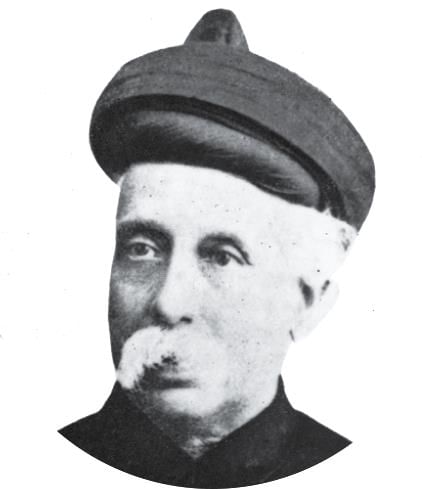 Atmaram Pandurang
Atmaram Pandurang - A precursor of the Prarthana Samaj was the Paramahansa Sabha, something like a secret society to spread liberal ideas and encourage the breakdown of caste and communal barriers.
- Mahadeo Govind Ranade (1842-1901), joined the samaj in 1870, Other leaders of the samaj were R.G. Bhandarkar (1837- 1925) and N.G. Chandavarkar (1855-1923). The Prarthana Sabha was very attached to the bhakti cult of Maharashtra.
- There was a four-point social agenda also:
(i) Disapproval of caste system.
(ii) Women’s education.
(iii) Widow remarriage.
(iv) Raising the age of marriage for both males and females. - Dhondo Keshav Karve and Vishnu Shastri were champions of social reform with Ranade.
3. Young Bengal Movement and Henry Vivian Derozio
- ‘Young Bengal Movement’- The late 1820s and early 1830s. A young Anglo-Indian, Henry Vivian Derozio (1809-31), who taught at the Hindu College from 1826 to 1831, was the leader and inspirer of this progressive trend.
Henry Vivian Derozio
- The main reason for their limited success was the prevailing social conditions at that time, which were not ripe for the adoption of radical ideas.
- The Derozians lacked any real link with the masses, for instance, they failed to take up the peasants’ cause. Their radicalism was bookish in character.
- Despite their limitations, the Derozians carried forward Rammohan Roy's tradition of public education on social, economic and political questions. For instance, they demanded induction of Indians in higher grades of services, protection of ryots from oppressive zamindars, better treatment to Indian labour abroad in British colonies, revision of the Company’s charter, freedom of press and trial by jury.
- Surendranath Banerjea was to describe the Derozians as "the pioneers of the modern civilization of Bengal, the conscript fathers of our race whose virtues will excite veneration and whose failings will be treated with gentlest consideration”.
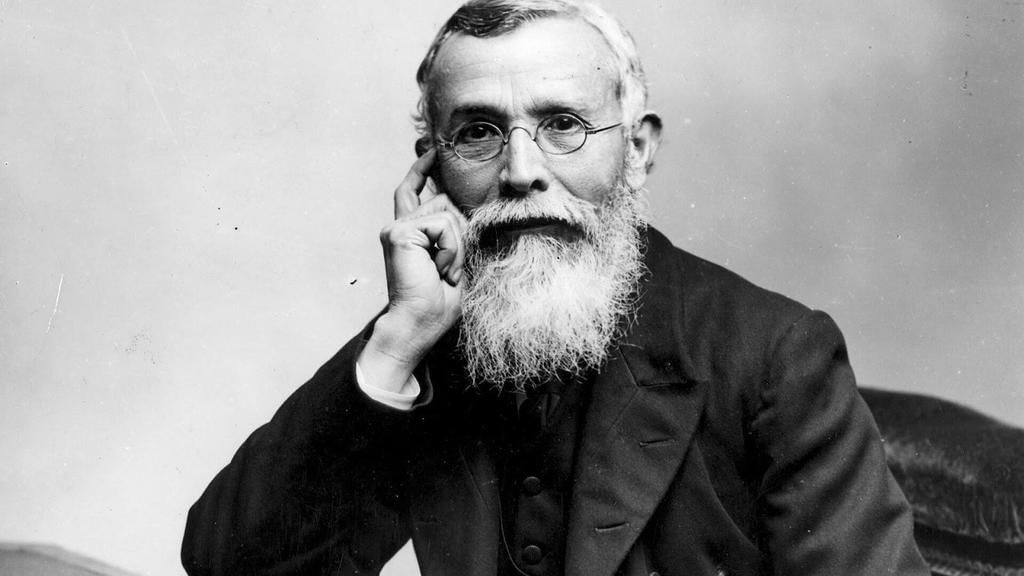 Surendranath Banerjea
Surendranath Banerjea
4. Ishwar Chandra Vidyasagar
- Vidyasagar’s ideas were a happy blend of Indian and Western thought. He believed in high moral values, was a deep humanist, and was generous to the poor.
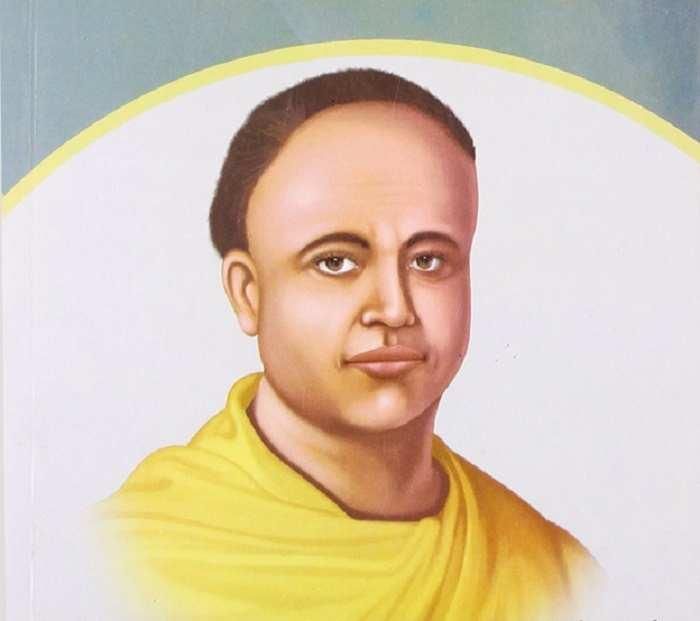 Ishwar Chandra Vidyasagar
Ishwar Chandra Vidyasagar - Vidyasagar started a movement in support of widow remarriage which resulted in legalization of widow remarriage. He was also a crusader against child marriage and polygamy. He did much for the cause of women’s education.
- As government inspector of schools, he helped organize thirty-five girls’ schools many of which he ran at his own expense.
5. Balshastri Jambhekar
- Balshastri Jambhekar (1812-1846) was a pioneer of social reform through journalism in Bombay, he attacked brahminical orthodoxy and tried to reform popular Hinduism. He started the newspaper Darpan in 1832.
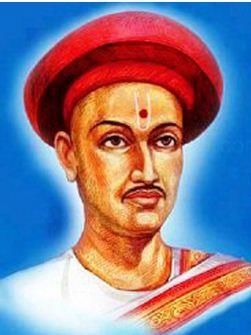 Balshastri Jambhekar
Balshastri Jambhekar - Known as the father of Marathi journalism. In 1840, he started Digdarshan which published articles on scientific subjects as well as history.
- Jambhekar founded the Bombay Native General Library and started the Native Improvement Society of which an offshoot was the Students Literary and Scientific Library.
- He was the first professor of Hindi at the Elphinston College, besides being a director of the Colaba Observatory.
6. Paramahansa Mandali
- Founded in 1849 in Maharashtra, the founders of the Paramahansa Mandali—Dadoba Pandurang, Mehtaji Durgaram and others—began as a secret society that worked to reform Hindu religion and society in general.
- The ideology of the society was closely linked to that of the Manav Dharma Sabha.
7. Satyashodhak Samaj and Jyotiba or Jyotirao Phule
- Jyotiba Phule (1827-1890), organized a powerful movement against upper caste domination and brahminical supremacy. Phule founded the Satyashodhak Samaj (Truth Seekers’ Society) in 1873, with the leadership of the samaj coming from the backward classes.
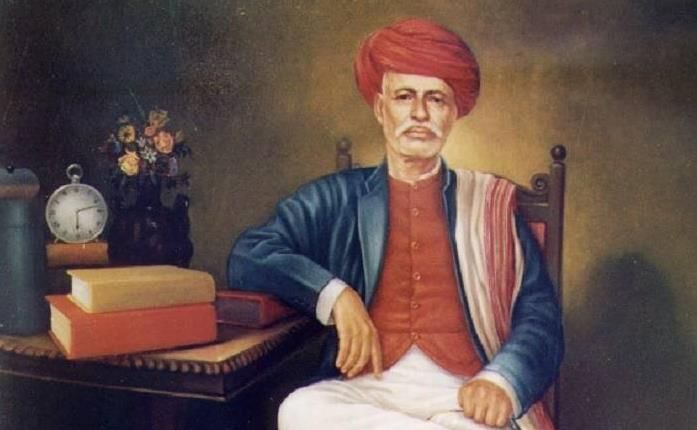 Jyotiba Phule
Jyotiba Phule - The main aims of the movement were:
(i) Social service
(ii) Spread of education among women and lower caste people. - Phule's works, Sarvajanik Satyadharma and Gulamgiri, became sources of inspiration for the common masses. Phule used the symbol of Rajah Bali as opposed to the brahmins’ symbol of Rama. Phule was awarded the title 'Mahatma’ for his social reform work.
8. Gopalhari Deshmukh ‘Lokahitawadi’
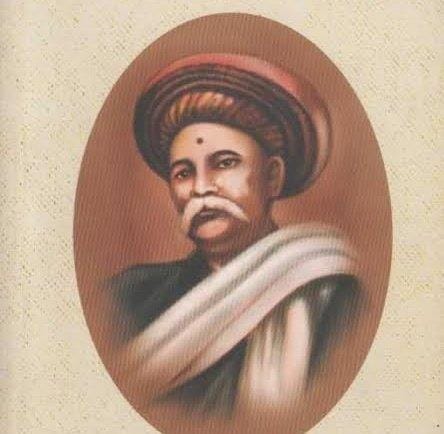 Gopalhari Deshmukh
Gopalhari Deshmukh
- Gopal Hari Deshmukh (1823-1892) was a social reformer and rationalist from Maharashtra.
- He wrote for a weekly Prabhakar under the pen name of Lokahitawadi on social reform issues.
- He said, " If religion does not sanction social reform, then change religion.”
- He started a weekly, Hitechhu, and also played a leading role in founding the periodicals, Gyan Prakash, Indu Prakash, and Lokahitawadi.
9. Gopal Ganesh Agarkar
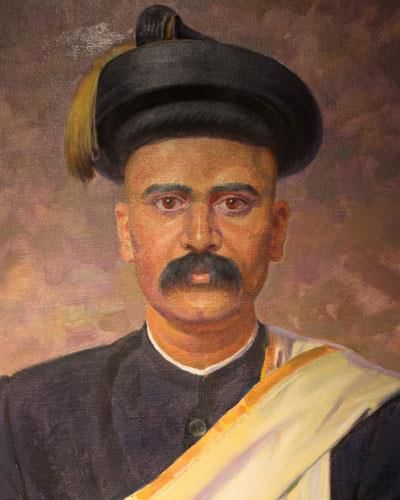 Gopal Ganesh Agarkar
Gopal Ganesh Agarkar
- Gopal Ganesh Agarkar (1856-1895) was an educationist and social reformer from Maharashtra. He criticized the blind dependence on tradition and false glorification of the past.
- He was also the first editor of Kesari, the journal started by Lokmanya Tilak. Later, he started his own periodical, Sudharak, which spoke against untouchability and the caste system.
10. The Servants of India Society
- Gopal Krishna Gokhale (1866-1915), a liberal leader of the Indian National Congress, founded the Servants of India Society in 1905 with the help of M.G. Ranade.
- The aim of the society was to train national missionaries for the service of India, to promote, by all constitutional means, the true interests of the Indian people, and to prepare a cadre of selfless workers who were to devote their lives to the cause of the country in a religious spirit.
- In 1911 the Hitavada began to be published to project the views of the society. After Gokhale's death (1915), Srinivasa Shastri took over as president.
11. Social Service League
- Narayan Malhar Joshi founded the Social Service League in Bombay with an aim to secure for the masses better and reasonable conditions of life and work.
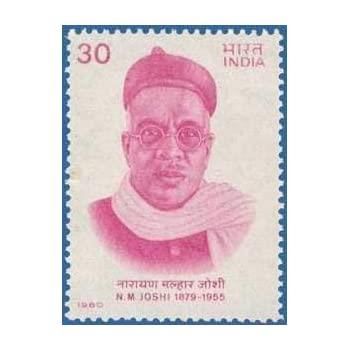
- Joshi also founded the All India Trade Union Congress (1920).
12. The Ramakrishna Movement and Swami Vivekananda
- The teachings of Ramakrishna Paramahamsa (1836-1886) found many followers. He is considered to have attained the highest spiritual experience available to Hindus.
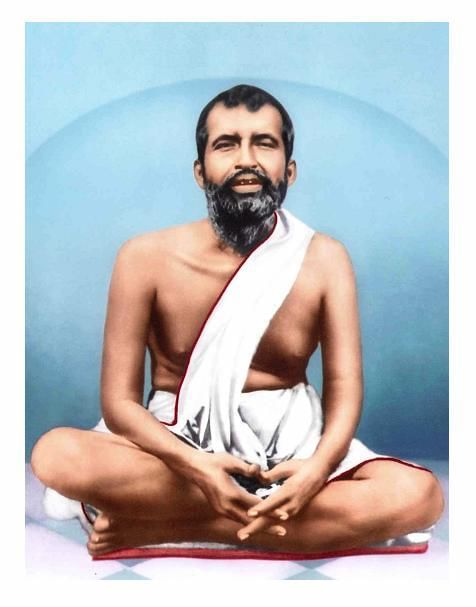 Ramakrishna Paramahamsa
Ramakrishna Paramahamsa - Two objectives of the Ramakrishna movement were:
(i) To bring into existence a band of monks dedicated to a life of renunciation and practical spirituality, from among whom teachers and workers would be sent out to spread the universal message of Vedanta as illustrated in the life of Ramakrishna.
(ii) In conjunction with lay disciples to carry on preaching, philanthropic and charitable works, looking upon all men, women and children, irrespective of caste, creed or colour, as veritable manifestations of the Divine. - Paramahamsa himself laid the foundations of the Ramakrishna Math as a nucleus to fulfill the first objective. The second objective was taken up by Swami Vivekananda after Ramakrishna's death when he founded the Ramakrishna Mission in 1897.
- The headquarters of the Ramakrishna Math and Mission are at Belur near Calcutta.
13. Swami Vivekananda
- Narendranath Datta (1862-1902), who later came to be known as Swami Vivekananda spread Ramakrishna's message.
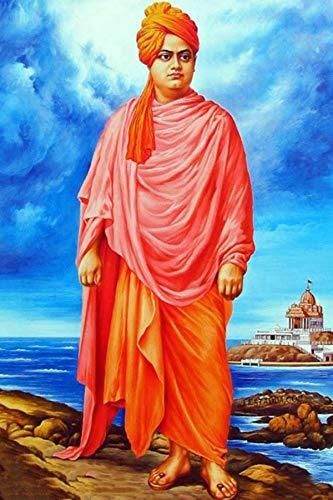 Swami Vivekananda
Swami Vivekananda - His mission was to bridge the gulf between paramartha (service) and vyavahara (behaviour), and between spirituality and day-to-day life. Vivekananda believed in the fundamental oneness of God and said, ‘For our own motherland a junction of the two great systems, Hinduism and Islam, is the only hope.”
- At the Parliament of Religions held at Chicago in 1893, Swami Vivekananda made a great impression on people by his learned interpretations. In 1897 he founded the Ramakrishna Mission. Vivekananda was a great humanist and used the Ramakrishna Mission for humanitarian relief and social work.
- The Mission stands for religious and social reform. Vivekananda advocated the doctrine of service.
14. Dayananda Saraswati and Arya Samaj
- Its founder, Dayananda Saraswati or Mulshankar (1824-1883). The first Arya Samaj unit was formally set up by him at Bombay in 1875 and later the headquarters of the Samaj was established at Lahore.
- Dayananda's views were published in his famous work, Satyarth Prakash (The True Exposition). He took inspiration from the Vedas and considered them to be ‘India's Rock of Ages', the infallible and the true original seed of Hinduism. He gave the slogan “Back to the Vedas”.
- Dayananda had received education on Vedanta from a blind teacher named Swami Virajananda in Mathura. Swami Dayananda once lamented the Hindu race as “the children of children”.
- The nucleus for this movement was provided by the Dayananda Anglo-Vedic (D.A.V.) schools, established first at Lahore in 1886, which sought to emphasise the importance of Western education.
- Swami Shraddhanand started the Gurukul at Hardwar in 1902 to impart education in the traditional framework.
- The ten guiding principles of the Arya Samaj are:
(i) God is the primary source of all true knowledge.
(ii) God, as all-truth, all-knowledge, almighty, immortal, creator of Universe, is alone worthy of worship.
(iii) The Vedas are the books of true knowledge.
(iv) An Arya should always be ready to accept truth and abandon untruth.
(v) Dharma, that is, due consideration of right and wrong, should be the guiding principle of all actions.
(vi) The principal aim of the Samaj is to promote world's well-being in the material, spiritual and social sense.
(vii) Everybody should be treated with love and justice.
(viii) Ignorance is to be dispelled and knowledge increased.
(ix) One's own progress should depend on uplift of all others.
(x) Social well-being of mankind is to be placed above an individual’s well-being. - The work of the Swami after his death was carried forward by Lala Hansraj, Pandit Gurudutt, Lala Lajpat Rai and Swami Shraddhanand, among others.
15. Seva Sadan
- A Parsi social reformer, Behramji M. Malabari (1853- 1912), founded the Seva Sadan in 1908 along with a friend, Diwan Dayaram Gidumal.
- It was his efforts that led to the Age of Consent Act regulating the age of consent for females.
16. Dev Samaj
- Founded in 1887 at Lahore by Shiv Narayan Agnihotri (1850- 1927) Its teachings were compiled in a book, Deva Shastra. Agnihotri spoke against child marriage.
17. Dharma Sabha
- Radhakant Deb founded this sabha in 1830. An orthodox society, it stood for the preservation of the status quo.
18. Bharat Dharma Mahamandala
- Other organizations created to defend orthodox Hinduism were the Sanatana Dharma Sabha (1895), the Dharma Maha Parishad in South India, and Dharma Mahamandali in Bengal. These organizations combined in 1902 to form the single organization of Bharat Dharma Mahamandala, with headquarters at Varanasi.
- This organization sought to introduce proper management of Hindu religious institutions, open Hindu educational institutions, etc. Pandit Madan Mohan Malaviya was a prominent figure in this movement.
19. Radhaswami Movement
- Tulsi Ramknown as Shiv Dayal Saheb, founded this movement in 1861. The Radhaswamis believe in one supreme being, supremacy of the guru, a company of pious people (Satsang), and a simple social life.
20. Sree Narayana Guru Dharma Paripalana ( SNDP) Movement
- The SNDP movement was an example of a regional movement born out of conflict between the depressed classes and upper castes.
- It was started by Sree Narayana Guru Swamy (1856- 1928) among the Ezhavas of Kerala. The Ezhavas were the single largest caste group in Kerala constituting 26 per cent of the total population.
- Narayana Guru took a stone from the Neyyar river and installed it as a Sivalinga at Aruvippuram on Sivaratri in 1888. The movement (Aruvippuram movement) drew the famous poet Kumaran Asan as a disciple of Narayana Guru.
- In 1889, the Aruvippuram Kshetra Yogam was formed. Thus the Aruvippuram Sree Narayana Guru Dharma Paripalana Yogam (in short SNDP) was registered in 1903 under the Indian Companies Act, with Narayana Guru as its permanent chairman, and Kumaran Asan as the general secretary.
- On the wall of the Aruvippuram temple he got inscribed the words, "Devoid of dividing walls of caste or race, or hatred of rival faith, we all live here in brotherhood.”
- The SNDP Yogam took up several issues for the Ezhavas, such as
(i) Right of admission to public schools.
(ii) Recruitment to government services.
(iii) Access to roads and entry to temples.
(iv) Political representation.
21. Vokkaliga Sangha
- The Vokkaiiga Sangha in Mysore launched an anti-brahmin movement in 1905.
22. Justice Movement
- This movement in Madras Presidency was started by C.N. Mudaliar, T.M. Nair and P. Tyagaraja In 1917, Madras Presidency Association was formed.
23. Self-Respect Movement
- This movement was started by E.V. Ramaswamy Naicker, a Balija Naidu, in the mid-1920s.
24. Temple Entry Movement
- In the meanwhile, Vaikom, in the northern part of Travancore, became a center of agitation for temple entry.
- In 1924, the Vaikom Satyagraha led by K.P. Kesava, was launched in Kerala demanding. Again in 1931 when the Civil Disobedience Movement was suspended, temple entry movement was organized in Kerala, on November 12, 1936, the Maharaja of Travancore issued a proclamation throwing open all government-controlled temples to all Hindus.
- A similar step was taken by the C. Rajagopalachari administration in Madras in 1938.
25. Indian Social Conference
- Founded by M.G. Ranade and Raghunath Rao, the Indian Social Conference met annually from its first session in Madras in 1887.
- The conference advocate inter-caste marriages, opposed polygamy and kulinism. It launched the ‘Pledge Movement' to inspire people to take a pledge against child marriage.
26. Wahabi/Walliullah Movement
- The teachings of Abdul Wahab of Arabia and the preachings of Shah Walliullah (1702-1763) inspired this essentially revivalist response to Western influences and the degeneration which had set in among Indian Muslims and called for a return to the true spirit of Islam.
- Two-fold ideals of this movement:
(i) Desirability of harmony among the four schools of Muslim jurisprudence which had divided the Indian Muslims (he sought to integrate the best elements of the four schools).
(ii) Recognition of the role of individual conscience in religion where conflicting interpretations were derived from the Quran and the Hadis. - The Wahabi Movement fizzled out in the face of British military might in the 1870s.
27. Titu Mir's Movement
- Mir Nithar Ali, popularly known as Titu Mir, was a disciple of Sayyid Ahmed Barelvi, the founder of the Wahabi Movement.
- Titu Mir adopted Wahabism and advocated the Sharia.
28. Faraidi Movement
- The movement also called the Fara'idi Movement because of its emphasis on the Islamic pillars of faith, was founded by Haji Shariatullah in 1818.
- The movement survived merely as a religious movement without political overtones after the death of Dudu Mian in 1862.
29. Ahmadiyya Movement
- Ahmadiyya forms a sect of Islam that originated from India. It was founded by Mirza Ghulam Ahmad in 1889.
- The Ahmadiyya community is the only Islamic sect to believe that the Messiah had come in the person of Mirza Ghulam Ahmad to end religious wars 30. Sir Syed Ahmed Khan and the Aligarh Movement.
- A section of Muslims led by Syed Ahmed Khan (1817-1898) stimulates a process of growth among Indian Muslims through better education and employment opportunities.
- After retirement in 1876, he became a member of the Imperial Legislative Council in 1878.
- His loyalty earned him a knighthood in 1888. He translated into Urdu and started the Mohammedan Anglo-Oriental College (later, the Aligarh Muslim University) at Aligarh in 1875.
- He believed in the fundamental underlying unity of religions or practical morality". Syed’s progressive social ideas were propagated through his magazine Tahdhib-ul-Akhlaq (Improvement of Manners and Morals).
- It aimed at spreading:
(i) Modern education among Indian Muslims without weakening their allegiance to Islam.
(ii) Social reforms among Muslims relating to purdah, polygamy, widow remarriage, women's education, slavery, divorce, etc.
30. The Deoband School (Darul Uloom)
- The Deoband Movement was organized by the orthodox section among the Muslim ulema.
- The Deoband Movement was begun at the Darul Uloom (or Islamic academic center), Deoband, in Saharanpur district (United Provinces) in 1866 by Mohammad Qasim Nanotavi (1832-80) and Rashid Ahmed Gangohi (1828-1905) to train religious leaders for the Muslim community.
- The aim of the Deoband Movement was moral and religious regeneration of the Muslim community the Nadwatal.
- Ulama and Darul Uloom in Lucknow in 1894-96 was founded.
31. Parsi Reform Movements
- The Rahnumai Mazdayasnan Sabha (Religious Reform Association) was founded in 1851 by a group of English educated Parsis for the "regeneration of the social conditions of the Parsis and the restoration of the Zoroastrian religion to its pristine purity”.
- The movement had Naoroji Furdonji, Dadabhai Naoroji, K.R. Cama, and S.S. Bengalee as its leaders. The message of reform was spread by the newspaper Rast Goftar (Truth-Teller).
32. Sikh Reform Movements
- The Singh Sabha Movement was founded at Amritsar in 1873 with a two-fold objective:
(i) To make available modern western education to the Sikhs.
(ii) To counter the proselytising activities of Christian missionaries as well as the Brahmo Samajists, Arya Samajists and Muslim maulvis. - The Akali movement (also known as Gurudwara Reform Movement) was an offshoot of the Singh Sabha Movement. It aimed at liberating the Sikh gurudwaras from the control of corrupt Udasi mahants.
- The government tried its repressive policies against the non-violent non-cooperation satyagraha launched by the Akalis in 1921, but had to bow before popular demands, it passed the Sikh Gurudwaras Act in 1922 (amended in 1925) which gave the control of gurudwaras to the Sikh masses to be administered through Shiromani Gurudwara Prabandhak Committee (SGPC) as the apex body.
33. The Theosophical Movement
- A group of westerners led by Madame H.P. Blavatsky (1831- 1891) and Colonel M.S. Olcott, who were inspired by Indian thought and culture, founded the Theosophical Society in New York City, United States in 1875.
- In 1882, they shifted their headquarters to Adyar, on the outskirts of Madras (at that time) in India. The society believed that a special relationship could be established between a person’s soul and God.
- In India, the movement became somewhat popular with the election of Annie Besant (18471933) as its president after the death of Olcott in 1907.
- Annie Besant had come to India in 1893. She laid the foundation of the Central Hindu College in Benaras in 1898. The college became the nucleus for the formation of Benaras Hindu University in 1916.
Significance of Reform Movements
➢ Positive Aspects
- Liberation of the individual from the conformity born out of fear and from uncritical submission to exploitation by the priests and other classes.
- Simplification of rituals made worship a more personal experience, translation of religious texts into vernacular languages, emphasis on an individual's right to interpret the scriptures.
- Emphasized the human intellect’s capacity to think and reason.
- Enabled their followers to meet the official taunt that their religions and society were decadent and inferior.
- Served the purpose of reducing the sense of humiliation which the conquest by a foreign power had produced.
- Promoting a modern, this-worldly, secular, and rational outlook was a major contribution of these reform movements. A basic change in the notions of pollution and purity’.
➢ Negative Aspects
- Had a narrow social base, namely the educated and urban middle classes, while the needs of the vast masses of peasantry and the urban poor were ignored.
- The tendency of reformers to appeal to the greatness of the past and to rely on scriptural authority encouraged mysticism.
- Insufficient emphasis on other aspects of culture—art, architecture, literature, music, science, and technology.
|
216 videos|855 docs|219 tests
|
FAQs on Spectrum Summary: General Survey of Socio-Cultural Reform Movements - History for UPSC CSE
| 1. What are socio-cultural reform movements? |  |
| 2. Who are the leaders of socio-cultural reform movements? |  |
| 3. What is the significance of reform movements? |  |
| 4. What are some examples of socio-cultural reform movements? |  |
| 5. How do socio-cultural reform movements impact society? |  |

















